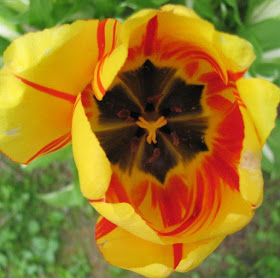themes: animals, nature, ecology
Aha! I have chiseled my way to the layer of animal books in my “to review” basket. These books illustrate different ways writers approach the topic: using poetry, focusing on ecology, and highlighting a specific kind of animal.
Hidden City: Poems of Urban Wildlife
by Sarah Grace Tuttle; illus. by Amy Schimler-Safford
48 pages; ages 4-8
Eerdman’s Books for Young Readers, 2018
In the night
under the table
a mother mouse
scurries back and forth…
From the mouse in the house to weeds in sidewalk cracks, Sarah Tuttle offers a close look at the wildlife sharing our cities. There are birds – lots of birds, snails, and insects galore. Bats, cats, and sign of skunk. All shown through the lens of poetry.
What I like about this book: I like that Sarah uses poetry to give us a way into observing the lives of our wild urban neighbors. There’s a fun poem about the courtship dance of pigeons – I can almost see them strut, turn, and dip as they try to gain the attention of the ladies. I like that the poems take us through the seasons of city living. And I really like that Sarah has included back matter – more facts about the wildlife that she’s introduced in the poems. I also like the artwork: collage landscapes and garden scenes.
Beastly Biomes
by Carly Allen-Fletcher
32 pages; ages 7-11
Creston Books (Lerner), 2019
Wherever you go on our planet, you will find animals living in many different types of places. Scientists call these places BIOMES. Each biome has its own special properties.
There are many small biomes, but the five main types are: aquatic, forest, grassland, desert, and tundra. Carly Allen-Fletcher takes us on a tour of these biomes, introducing us to the animals that live there. We meet wobbegongs and xingu rays in the ocean. We look for ovenbirds and cassowaries in forests. While visiting tundra, we find pikas and skuas.
 What I like about this book:
What I like about this book: It would be impossible to show all of the animals living in a particular biome, so I appreciate Carly’s focus on a few of the iconic beasts that inhabit those areas. I also like how she shows the diversity of a particular biome. For example, a desert is defined by the amount of rainfall it gets. Less than 10 inches a year and you’ve got a desert. We may think of deserts as hot places, with scorching sun, abounding with snakes and lizards. But there are cold deserts, too – and even polar deserts! Antarctica has so little rain it qualifies as a desert. I like that the back end pages are a map that shows where the different biomes are around the world.
Carly has another book about animals, too,
Animal Antipodes (Creston Books, 2018). In that book she explores the question: if you could dig to the other side of the world, what animals would you find living there? Many of us already know that polar bears live in and around the north pole and penguins inhabit the south pole. But if you’re hanging out with pandas in the forested valleys of Xi’an, China the other side of the planet is the sprawling city of Santiago, Chile. What lives there? Condors!
So Cute! Pandas
by Crispin Boyer
32 pages; ages 3-7
National Geographic Children’s Books, 2019
Psssst. Panda! Wale up!
Pandas have such big round eyes. They have fluffy ears and a squishy tummy! They are…SO CUTE! This book is just one in the new “So Cute” series that incorporates cute photos of animals with silly text. I think the idea is to inspire kids to learn about these cuddly beasts by laughing. Except for the shark. Sharks are not cute and cuddly – they are So Cool!
What I like about this book: I like the fun and breezy text, and the way panda talks back. Additional information is included in text boxes, such as those comparing pandas to other bears: grizzlies, brown, and polar. Along the way we learn fun facts – did you know that a panda eats about 30 pounds of bamboo a day? I like that there is information about panda conservation, too.
Beyond the Books:
Create a collage to show a scene from your yard or street. Include a wild animal that you have observed in that habitat: a bird, bug, mammal, or reptile perhaps?
Try your hand at writing a poem about a wild animal who shares your town or city with the human residents. Perhaps ladybugs clinging to your window screens, a deer nibbling the roses in a neighbor’s garden, or a bear wandering down Main Street.
What animals live across the world from you? Use a globe to find where you’d end up if you dug to the opposite side of the earth (your antipode) – and then find out what animals live there.
Pandas are black and white bears. Are there any black and white animals living in your neighborhood?
Today we're joining other book bloggers over at
STEM Friday, where you can discover other cool STEM books. And we're joining Perfect Picture Book Friday, an event where bloggers share great picture books at
Susanna Leonard Hill's website .
Review copies provided by publishers.


















